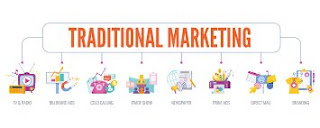Digital Marketing Tips for Small Businesses on a Budget
The digital world is a bustling marketplace, and for businesses to thrive, they need a strong online presence. This is where digital advertising and marketing come in. But with so many options and strategies available, it can be overwhelming to know where to begin. This blog post will equip you with the knowledge to navigate the digital landscape effectively. We’ll delve into digital advertising, explore essential marketing tips, and shed light on the importance of technical SEO.
Digital
Advertising: Reaching Your Target Audience
Digital advertising allows you to
target your ideal customers across various online platforms. Here are some
popular methods:
Search
Engine Marketing (SEM):
This involves paid advertising on
search engines like Google. You create targeted ads that appear on search
results pages (SERPs) when users search for specific keywords related to your
product or service.
Social
Media Advertising:
Platforms like Facebook, Instagram,
and Twitter offer robust advertising options. You can create targeted ads based
on demographics, interests, and behaviors to reach a highly relevant audience.
Display
Advertising:
Eye-catching banner ads appear on
websites you frequent. They can generate brand awareness and drive traffic to
your website.
Pay-Per-Click
(PPC) Advertising:
You only pay when someone clicks on
your ad. This makes it a cost-effective way to drive qualified leads to your
website.
Digital
Marketing Tips: Building a Strong Online Presence
While digital advertising gets your
message out there, digital marketing
encompasses a broader range of strategies to build a strong online presence and
nurture relationships with potential customers. Here are some key tips:
Content
Marketing:
Create valuable and informative
content that attracts your target audience. This could include blog posts,
infographics, videos, and ebooks. Consistent, high-quality content establishes
you as an authority in your field and builds trust with potential customers.
Social
Media Marketing:
Engage with your audience on social
media platforms. Share valuable content, respond to comments and messages, and
run interactive campaigns to build relationships and brand loyalty.
Email
Marketing:
Build an email list and send
targeted email campaigns to nurture leads and convert them into customers.
SEO
(Search Engine Optimization):
Optimize your website and content to
rank higher in search engine results pages (SERPs). This will drive organic
traffic to your website without relying solely on paid advertising.
Technical
SEO: The Foundation of Online Visibility
Technical SEO ensures your website
is search engine friendly, making it easier for search engines to crawl, index,
and understand your content. This significantly impacts your website’s ranking
in search results. Let’s explore some crucial aspects of technical SEO:
Mobile-friendliness:
With the majority of web searches
now happening on mobile devices, having a website that adapts seamlessly to
different screen sizes is critical. Use Google’s Mobile-Friendly Test tool to
assess your website’s mobile responsiveness.
Website
Speed:
A slow-loading website frustrates
users and harms your SEO ranking. Use tools like Google PageSpeed Insights to
analyze your website’s speed and identify areas for improvement.
Sitemaps:
A sitemap is a file that lists all
the pages on your website. Submitting your sitemap to search engines helps them
discover and index your content more efficiently.
Clean
URLs:
Descriptive and keyword-rich URLs make
it easier for search engines and users to understand the content on your page.
Use hyphens to separate words and avoid using excessive numbers or special
characters.
Internal
Linking:
Link relevant pages on your website
to each other. This improves website navigation for users and distributes link
juice (SEO value) throughout your website.
Optimizing
Your Digital Strategy
By combining these elements, you can
develop a comprehensive digital advertising and marketing strategy. Here are
some additional tips for success:
Identify
your target audience:
Understanding your ideal customer is
crucial for crafting targeted messages and content that resonate with them.
Set
SMART goals:
Set Specific, Measurable,
Achievable, Relevant, and Time-bound goals to track your progress and measure
the effectiveness of your campaigns.
Analyze
and adapt:
Use analytics tools to track the
performance of your campaigns. Analyze the data regularly and adapt your
strategies based on what’s working and what’s not.
Stay
updated:
The digital landscape constantly
evolves. Stay updated on the latest trends and algorithm changes to ensure your
strategies remain effective.
Digital advertising and marketing
offer powerful tools to reach your target audience, build brand awareness, and
drive sales. By understanding the fundamentals of digital advertising,
implementing essential marketing tips, and focusing on technical SEO, you can create a robust
online presence that attracts and engages your ideal customers. Remember,
building a successful online strategy requires dedication and ongoing
optimization. With the right approach, you can leverage the power of the
digital world
.jpg)


.jpg)
.jpg)

Comments
Post a Comment